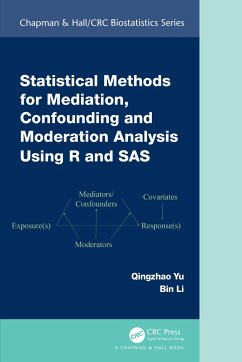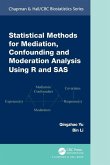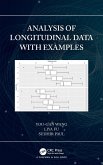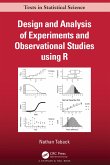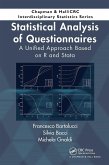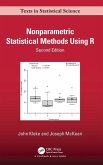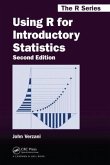Third-variable effect refers to the effect transmitted by third-variables that intervene in the relationship between an exposure and a response variable. Differentiating between the indirect effect of individual factors from multiple third-variables is a constant problem for modern researchers.
Statistical Methods for Mediation, Confounding and Moderation Analysis Using R and SAS introduces general definitions of third-variable effects that are adaptable to all different types of response (categorical or continuous), exposure, or third-variables. Using this method, multiple third- variables of different types can be considered simultaneously, and the indirect effect carried by individual third-variables can be separated from the total effect. Readers of all disciplines familiar with introductory statistics will find this a valuable resource for analysis.
Key Features:
Parametric and nonparametric method in third variable analysisMultivariate and Multiple third-variable effect analysisMultilevel mediation/confounding analysisThird-variable effect analysis with high-dimensional data Moderation/Interaction effect analysis within the third-variable analysisR packages and SAS macros to implement methods proposed in the book
Statistical Methods for Mediation, Confounding and Moderation Analysis Using R and SAS introduces general definitions of third-variable effects that are adaptable to all different types of response (categorical or continuous), exposure, or third-variables. Using this method, multiple third- variables of different types can be considered simultaneously, and the indirect effect carried by individual third-variables can be separated from the total effect. Readers of all disciplines familiar with introductory statistics will find this a valuable resource for analysis.
Key Features:
Parametric and nonparametric method in third variable analysisMultivariate and Multiple third-variable effect analysisMultilevel mediation/confounding analysisThird-variable effect analysis with high-dimensional data Moderation/Interaction effect analysis within the third-variable analysisR packages and SAS macros to implement methods proposed in the book
"I believe that this book is very handy for not only professionals or early career professionals but also graduate students, and those wanting to be up to speed on the latest techniques for analysis of the effect of the third variable. I will recommend this book without any reservation to individuals in research that frequently see the complications associated with the interpretation of the third variable."
Reuben Adatorwovor, College of Public health University of Kentucky, USA, ISCB, April 2023
Reuben Adatorwovor, College of Public health University of Kentucky, USA, ISCB, April 2023

